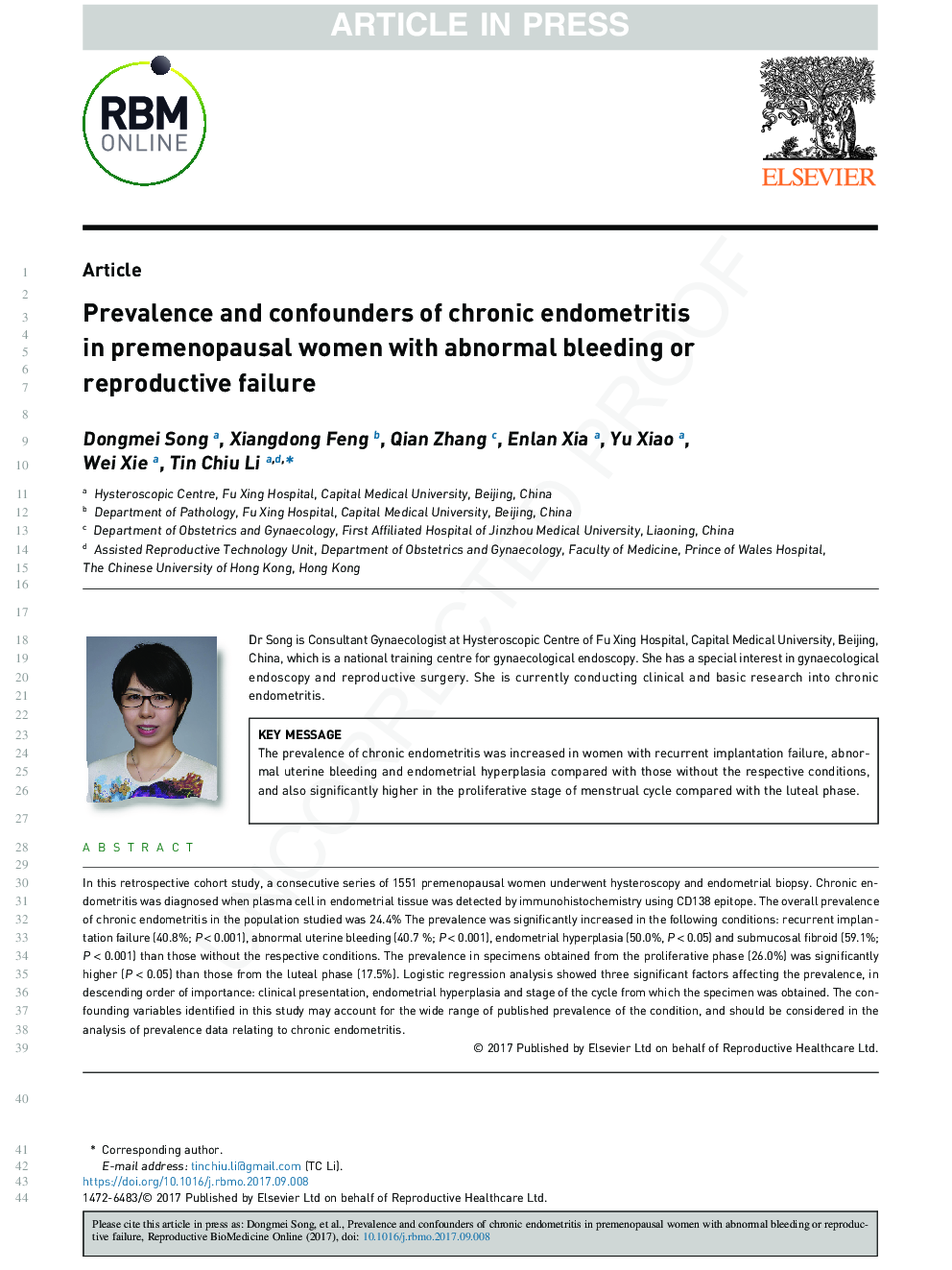| Article ID | Journal | Published Year | Pages | File Type |
|---|---|---|---|---|
| 8783960 | Reproductive BioMedicine Online | 2018 | 6 Pages |
Abstract
In this retrospective cohort study, a consecutive series of 1551 premenopausal women underwent hysteroscopy and endometrial biopsy. Chronic endometritis was diagnosed when plasma cell in endometrial tissue was detected by immunohistochemistry using CD138 epitope. The overall prevalence of chronic endometritis in the population studied was 24.4% The prevalence was significantly increased in the following conditions: recurrent implantation failure (40.8%; P < 0.001), abnormal uterine bleeding (40.7 %; P < 0.001), endometrial hyperplasia (50.0%, P < 0.05) and submucosal fibroid (59.1%; P < 0.001) than those without the respective conditions. The prevalence in specimens obtained from the proliferative phase (26.0%) was significantly higher (P < 0.05) than those from the luteal phase (17.5%). Logistic regression analysis showed three significant factors affecting the prevalence, in descending order of importance: clinical presentation, endometrial hyperplasia and stage of the cycle from which the specimen was obtained. The confounding variables identified in this study may account for the wide range of published prevalence of the condition, and should be considered in the analysis of prevalence data relating to chronic endometritis.
Keywords
Related Topics
Health Sciences
Medicine and Dentistry
Obstetrics, Gynecology and Women's Health
Authors
Dongmei Song, Xiangdong Feng, Qian Zhang, Enlan Xia, Yu Xiao, Wei Xie, Tin Chiu Li,
